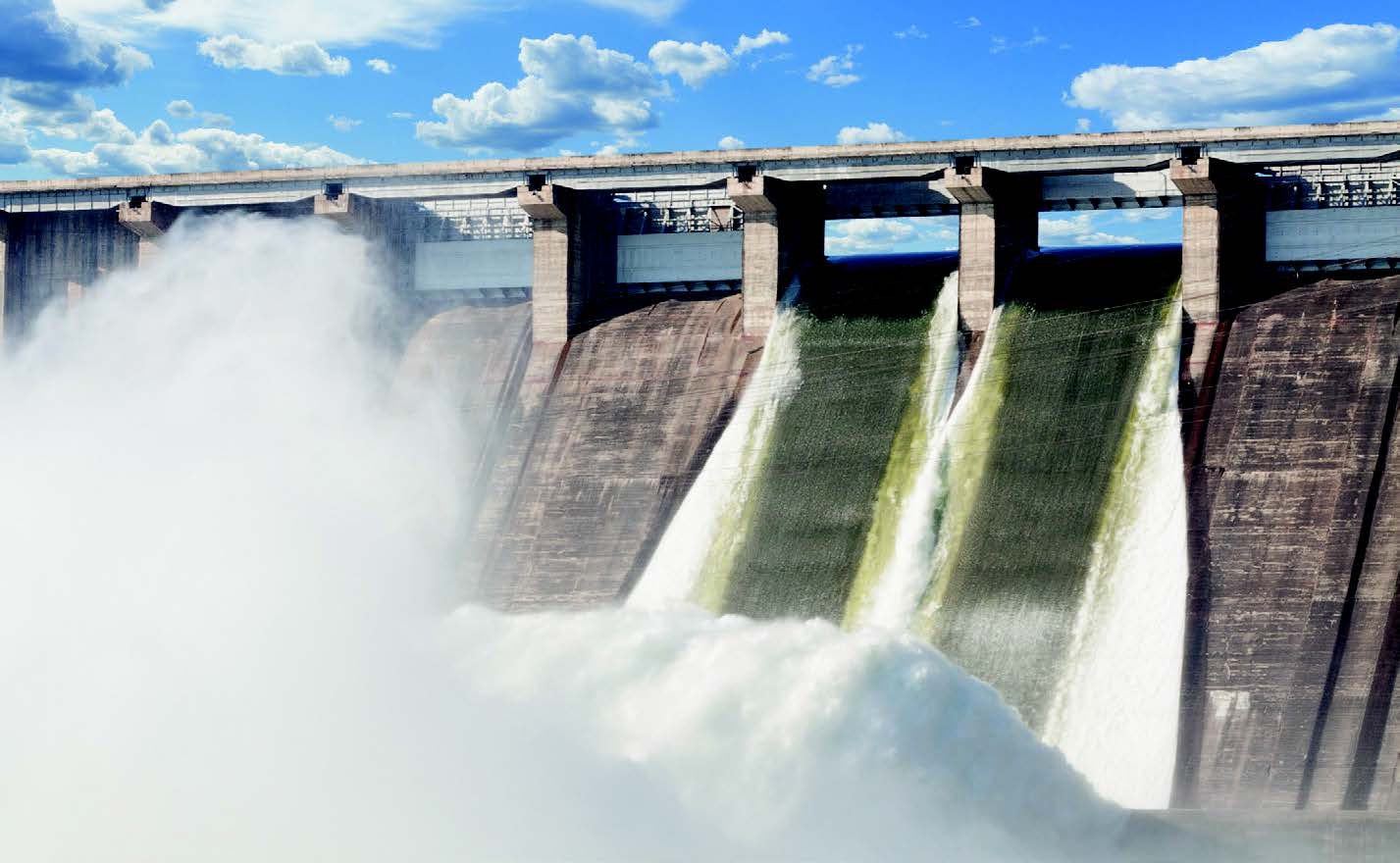The water-energy-tribology nexus
Dr. Ali Erdemir | TLT President's Report December 2016
A potential domino effect could significantly impact every aspect of our modern lives.

Hydroelectricity accounts for more than 80% of the world’s renewable energy.
© Can Stock Photo / Siberia
ACCORDING TO THE UNITED STATES GEOLOGICAL SOCIETY, about 71% of the Earth’s surface is covered by water. Yet there is a global consensus that we may be deprived of this vital resource in a very short while.
Besides being our second-most formidable lifeline after air, water also is one of the oldest sources for clean and renewable energy. In fact, energy production from hydroelectricity accounts for more than 80% of the world’s renewable energy. The power of water has long been realized in many other fields. Even the production of electricity from fossil fuels (whether it be coal, natural gas or fuel oil) or nuclear power plants requires huge amounts of water for cooling.
Water also is an essential commodity for manufacturing, food production and a host of other cross-cutting industries. In addition, oil and natural gas fracking has lately been consuming huge amounts of water, thus threatening our water reservoirs for drinking and irrigation purposes, especially during hot seasons. Deep water in high seas or rivers also provides the most convenient and cheapest ways by which we transport energy in the forms of oil and coal. In short, every industrial activity relies on water usage for a multitude of purposes; without water, supply of those goods that feeds our daily needs potentially might come to a halt.
Conversely, recovery, storage, treatment and delivery of water to meet our daily fresh water needs consume huge amounts of energy. We also consume energy to heat water for our own comfort zone—making tea or coffee or cooking a delicious meal. In addition, we use water to cool our car’s engine through which huge amounts of energy is dissipated. Bottom line: water and energy are intimately connected and embedded in one another; hence the shortage or disruption of one will instantly trigger a domino effect on the other and adversely impact our modern lifestyle.
Looking into the future, it seems quite inevitable that the recovery and resupply of fresh water will become more and more challenging as the worldwide need for fresh water surges due to population growth, irrigation and expanding industrial activities. Closing the shortage is certainly feasible but will require more energy-intensive desalination processes or deeper underground water pumping and treatment technologies. Overall, saving energy and water at every conceivable level (even if it is one drop or one Joules) is becoming more important as these tiny drops all over the world can ultimately turn into big amounts in the long run. We also must remember that such a practice will help tackle global challenges, such as greenhouse gas emissions, that are heavily embedded in the production and uses of both energy and water. That’s why climate disruption is important—it can cause severe drought in some parts of the world and flooding in others.
Finally, one of the most overlooked issues in water and energy nexus is the fact that many of the machines and components used in the production, delivery and use of both water and energy are subject to friction and wear. Think of water pumps that transport water from one place to another such as our homes or work places. Rotating face seals used in these water pumps experience wear and generate friction that consume relatively small amounts of energy. But for circulating pumps like automotive water pumps, this loss can be a sizable fraction of the total. In applications like an auxiliary system to ensure the proper working environment for a seal, the energy consumption can be significantly larger than the seal’s frictional heat loss.
In The Rime of the Ancient Mariner, the poet Samuel Taylor Coleridge wrote, “Water, water everywhere, nor any drop to drink.” Let’s hope we tribologists won’t soon be saying, “Nor any drop for manufacturing.”
 Ali Erdemir is a Distinguished Fellow at Argonne National Laboratory in Lemont, Ill. You can reach him at erdemir@anl.gov
Ali Erdemir is a Distinguished Fellow at Argonne National Laboratory in Lemont, Ill. You can reach him at erdemir@anl.gov.